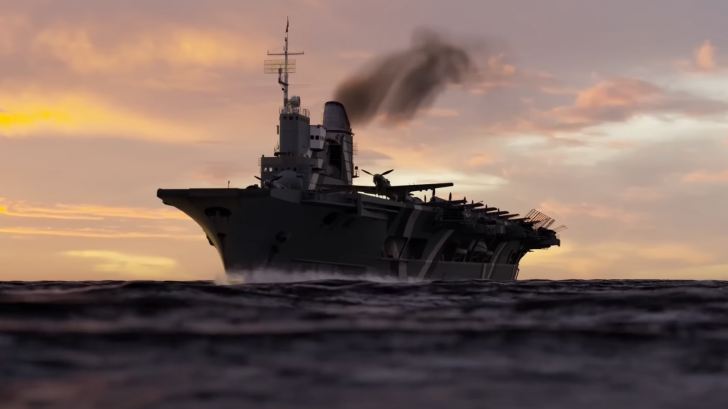You might find yourself asking, where were the German carriers in World War II? Did Hitler have any? Well kind of.
Germany built an aircraft carrier during WWII and had three more planned. It was one of the biggest ships built during the war, but it was never deployed.
Here’s the story behind the Graf Zeppelin aircraft carrier:
The Zeppelin
You probably heard of the word Zeppelin, and the first thing that might come into mind are large airships, notably the famous Hindenburg.
However, this particular Zeppelin was unique. Named after Graf Ferdinand fone Zeppelin, the inventor of airships, this ship was to be the first WWII German aircraft carrier. Hitler had hoped that it would be one of the key factors to beat the Royal Navy, and dominating the seas.
Plan Z
In 1934, Hitler was aware that the German Navy isn’t as strong as the British. He figured that he needed to strengthen the Kriegsmarine, and new types of ships to be developed.
Plan Z was created to strengthen the presence of the Kriegsmarine in the Atlantic and the odds against the Royal Navy. It also listed aircraft carriers as one of the priorities, and four Graf Zeppelin carriers were planned to be built in total.
Unconventional Design
Instead of following the design of conventional aircraft carriers, the idea was to use heavy guns in the design. That way, the ship could defend itself against its enemies.
The ship’s main weaponry apart from the aircraft would have been 16 x 150 mm guns, the same ones used as secondary armaments in battleships like the Bismarck and Scharnhorst. Moreover, 12 heavy anti-air 105mm guns will also be accompanied by smaller 37 and 20mm AA guns.
This is much heavier firepower as compared to other WII aircraft carriers like the Japanese Akagi, and the Essex class.
Abrupt Changes
The first ship of the series would have the same name if its class and launched in 1938, with the second aircraft carrier undergoing construction.
However, with the invasion of Norway in 1940, Nazi Germany found itself with a ton of beachside real estate to defend. As a result, all the work on carriers A and B was stopped. Moreover, its 15-centimeter guns were taken away to be mounted as a coastal defense in Norway. Moreover, its 10.5 cm flat cannons were also removed.
It was then decided that the B carrier was to be scrapped, the focus moving to the construction of more U-boats as they showed to be very effective in the war so far.
The End
With the loss of the Bismarck and Scharnhorst, Germany decided to focus on U-boats, and the Zeppelin was moved to Stettin and left there to rot for another two years before it met its end.
At this point, the Red Army advanced fast. The Germans are aware of the fact that the war was lost. Thus, wanting to deprive the enemy of its beloved ship, they placed explosives and sunk it down into the depths of the ocean.
However, due to shallow waters, the carrier ended up being half-sunk. It was later towed by the Soviets and sunk in a training exercise in 1947.



